Protein Quality: Plant vs Animal -Is One Better? - #HP-EVOO - Blog #84
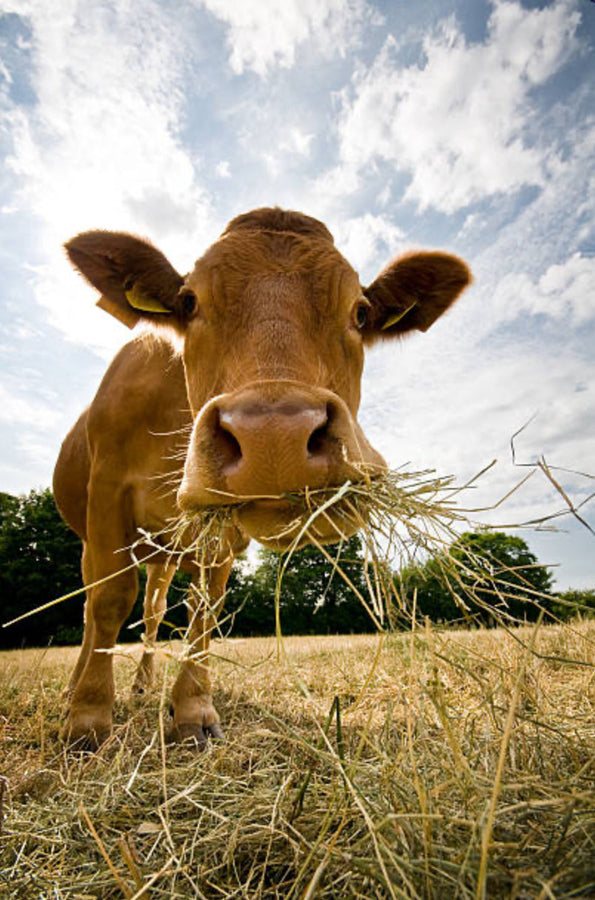
Hi Everyone! Welcome back to another Friday blog! Today I wanted to take a look at protein. If you look at the nutrition content on a food label, you'll see the amount of total protein - but this tells you very little about whether or not you are getting all of the amino acids required for optimal nutrition. There is a growing demand to require the amino acids content in foods to be listed on the label. Other considerations are the source and quality of protein - did it come from plants or animals? Was it wild-caught, grass-fed, regeneratively produced - or did it come from a standard feed lot? Is one better than the other? Let's delve in.
First, what is protein? Protein is the collective term we use for all the AAs (amino acids) - the building blocks of life. There are 20 human proteinogenic (genetically encoded) amino acids - and 2 additional amino acids (selenocysteine and pyrrolysine) that are "co-translationally" inserted into proteins. Nine of these are essential amino acids (EAAs) - with 1 EAA-dependent - Cysteine can only be synthesized from methionine - so, it is critical to get enough methionine. Glycine is conditionally essential - meaning it is required in high amounts. Our body can make it - but only if we have the appropriate substrate and functioning organs. This means we MUST get these from our diet. How do you know if you are getting all or enough of these? Currently, no nutrition labels contain this information for us. Do we need the same amount of each EAA, or are some more important? We now know that if leucine content is not high enough, your body will not get the signal to make "new" muscle, for example. These are precursors to important chemicals in the body, such as the neurotransmitter serotonin - synthesized from tryptophan - dopamine and norepinephrine synthesized from tyrosine (a non-essential) that is synthesized from phenylalanine. If we aren't getting enough of our essential amino acids, we may experience depression, mood changes and much more.
EAAs:
- histidine
- isoleucine - BCAA (branched chain amino acid)
- leucine - BCAA
- lysine
- methionine
- phenylalanine
- threonine
- tryptophan
- valine - BCAA
EAA-dependent = cysteine - synthesized from methionine
- Cysteine is incredibly important and is the precursor to glutathione (the body's master antioxidant). "The human genome encodes about 214,000 Cys-coding sequences." It has a sulfur group and is involved in disulfide bridges that support the function of other proteins, is involved in controlling inflammation and cellular protection throughout the body, including the retina. Cysteine "supports enzyme catalysis, transcriptional regulation, protein folding, and 3-dimensional structure" of proteins. If we are deficient, we may experience chronic low-grade inflammation, low energy and more.
Conditionally essential
- Glycine "is abundant in plasma and represents 11.5% of the total amino acids and 20% of the nitrogen in body proteins and accounts for 80% of protein." It is the smallest and likely the most important AA - due to the fact it is amphoteric - with both negative and positive parts that allows it to act as a double agent - both as an acid and as a base. Water is a perfect example of an amphoteric substance. Here's the problem. Glyphosate is an analog of glycine! It can take glycine's place and incorporate into our proteins, enzymes, and structural tissues - creating non-functioning proteins - driving disease and even cancer. This explains much of the spike in disease since Monsanto developed GMO soybeans in the 1980's. Check out my blog on glyphosate. Further, we discard the animal parts high in glycine, like cartilage and connective tissue - we aren't eating foods high in glycine.
- Taurine - this is an amino acid that is NOT used in protein synthesis but participates in cell volume regulation, provides a substrate for the formation of bile salts, is abundant in the brain, retina, muscle tissue and organs. "Taurine serves a wide variety of functions in the central nervous system, from development to cytoprotection, and taurine deficiency is associated with cardiomyopathy, renal dysfunction, developmental abnormalities, and severe damage to retinal neurons. All ocular tissues contain taurine, and quantitative analysis of ocular tissue extracts of the rat eye revealed that taurine was the most abundant amino acid in the retina, vitreous, lens, cornea, iris, and ciliary body. In the retina, taurine is critical for photoreceptor development and acts as a cytoprotectant against stress-related neuronal damage and other pathological conditions."
So, where do we get these important amino acids? According to Dr. Gabrielle Lyon, if you are plant-based you will need to eat 35% more calories to get the amino acids you require. For example, you would need to eat 6 cups of quinoa to equal what you'd get in a 3 oz chicken breast. Did you know that roughly 80% of the plant-based protein in the U.S. and world comes from wheat? 😮 Wheat is deficient in several essential amino acids - that's why they "enrich" it using synthetics. A 2023 article looked at enriching wheat bread with "meat powder from laying hen fed diet with insect meal." WHAT?? Have we not learned the hazards of HIGHLY-PROCESSED, LAB-CREATED food-like substances? Global production was roughly 785 million metric tons. Wheat is deficient in isoleucine, leucine, threonine, tryptophan and lysine. Further, it is sprayed with glyphosate to desiccate it prior to harvest. But they don't stop there. Here in the US, they allow the addition of potassium bromate to improve dough elasticity and rise - even though it is banned in many countries because it is a known carcinogen. FYI - the UK has banned it since 1990.
Corn is a GMO product and is also lacking in EAAs, with lysine and tryptophan being the lowest or close to non-existent in both wheat and corn. When our diet consists of high levels of wheat and corn, our levels of serotonin go down affecting mood and leading to depression. Serotonin influences sex hormone production. Amino acid deficiencies don't just affect hormones and neurotransmitters, but so many things in the body - structural protein deficiencies, aberrant metabolic signaling and poor brain function to name a few. Think of it this way - you need to build a 20-story building, but you don't have concrete for the foundation or any rebar for support. You are not going to have a sturdy building that can withstand rain, wind, elements... Our body is the same - we don't have the appropriate building blocks, we don't have a functioning, resilient body.
Amino Acids are the building blocks for ALL your enzymes - they have jobs to perform - these are your working tools. They transport materials, attach things together and prevent things from going where they are not supposed to go. They are the structural proteins that build our tissues, antibodies, bones, teeth, hair, etc. If you want a strong and resilient body, you need to be paying attention to your EAAs! If your diet is lacking in tryptophan, for example, you can't make serotonin! It is also the precursor to melatonin - one of the 2 antioxidants used by your mitochondria. Being deficient in just this one AA can easily set you up for depression, sleep disturbances, low energy and mitochondrial dysfunction!
Compounding the insufficiency of AAs is the fact that nearly 1/4 adults use a PPI (proton pump inhibitor) or antacid. The stomach must be very acidic to break apart proteins into their AA components for absorption. If you don’t have enough stomach acid, proteins cannot be fully broken down. These undigested protein particles cause inflammation in the small intestine and weaken the tight junctions - allowing these protein fragments to leak out of the gut and be confronted with the immune system. These fragments can through molecular mimicry ‘look like’ other parts of the body -setting you up for an autoimmune disease like Hashimoto’s Thyroiditis or Rheumatoid Arthritis for example.
On top of this, as a nation we are not even meeting the bare minimum daily requirement for protein. Coupled with dietary protein that is deficient in EAAs, we have a nation of structurally and metabolically deficient humans. "For synthesis of new muscle protein, all the EAAs, along with the eleven non-essential amino acids (NEAAs) that can be produced in the body, must be present in adequate amounts. The branched-chain amino acids leucine, isoleucine and valine are three of the nine EAAs. Leucine is not only a precursor for muscle protein synthesis, but also may play a role as a regulator of intracellular signaling pathways that are involved in the process of protein synthesis." In this abstract, they report BCAAs alone are not enough to stimulate protein synthesis, so the claim by supplement manufacturers that taking BCAAs stimulate muscle synthesis is not valid. They also highlight the fact that new muscle synthesis can only happen postprandial (after eating) and ALL the AAs must be present - otherwise, AAs are stolen from existing muscle = no net gain in muscle tissue.
We now know that longevity is closely related to muscle mass. It is also clear that if you don’t develop your muscle mass early, it can “predestine” you to store fat on your organs - you become “skinny-fat” with VAT (visceral adipose tissue) later in life. Further, as we age, we can’t build new muscle tissue as readily as we could when we were 20. It takes MORE quality protein (that includes ALL the AAs) to make new muscle tissue. The current recommendation if you are >60 yo is 1.5-1.9g/Kg body weight - to prevent sarcopenia (muscle wasting/loss). However, the recommendation for optimal functioning and performance is ~ 1g/lb of ideal body weight. So, if you are 150# female in her 60’s, you need ~150g protein/day! This can be a challenge, particularly for elderly who are not eating as much. The smaller amount you eat, the higher the quality needs to be - just to meet the basic requirements. So, choosing high-quality complete protein that contains high levels of EAAs is key!
If you are vegetarian or vegan, it can be very difficult to do. A completely plant-based diet is exceptionally hard to do properly without losing precious muscle mass. Vegans especially need to supplement - just to be able to get B12 for example. Further, you can’t get vitamin A in its functional form (retinol) from plants - it is beta carotene - a form that requires conversion in the body. If your body can’t efficiently convert beta carotene to retinol, you’ll have some problems - poor night vision is just one. It is very important to consider the source of the protein and how it is processed. If you are talking powders, is it pea or whey protein powder? There is 8g protein in 1 C peas - roughly 15g per serving of pea protein powder. What about whey protein powder? Definitely more protein at 20-27g per serving. According to a warning from Harvard: “Protein powders are powdered forms of protein that come from plants (soybeans, peas, rice, potatoes, or hemp), eggs, or milk (casein or whey protein). The powders may include other ingredients such as added sugars, artificial flavoring, thickeners, vitamins, and minerals. The amount of protein per scoop can vary from 10 to 30 grams. Supplements used for building muscle contain relatively more protein, and supplements used for weight loss contain relatively less.”
It is not easy - even if you consume animal products. The animal must have eaten the right food - grasses and wild weeds - not grains!! This is another reason to choose grass-fed, sustainably raised beef, pastured chicken and eggs and wild-caught fish. These animals ate the right foods - so, their products are high in phytochemicals and polyphenols that have profound health promoting benefits. Our ancestors ate nose to tail and did not waste any part of the animal. We got all the nutrients needed - the fiber we got from foraging wild plants.
There are several benefits to consuming quality meat: optimal ω 6:3 ratio, higher in BCAA metabolites - signifying higher muscle protein content - higher in B vitamins as well as fat-soluble vitamins like retinol (active vitamin A) and vitamin E, minerals and up to 4x higher levels of CLA (conjugated linoleic acid) that promotes muscle gain as well as being anti-cancer and anti-obesity. Let’s compare grass-fed/finished beef to conventional feed-lot grain-finished beef:


Grass-fed/finished beef - particularly when allowed to roam and forage for wild plants - is sustainable and regenerative - has very little impact on global warming - high in ω 3s, full of vitamins, minerals, amazing antioxidants, anti-inflammatory phytochemicals and polyphenols that act as growth factors for beneficial bacteria - selectively inhibiting pathogens - enhancing absorption and stability of essential nutrients. It is lower in homocysteine, triglycerides and AGEs (advanced glycation end products).This helps to prevent chronic diseases such as cancer, CVD (cardiovascular disease), T2D (type 2 diabetes), HTN (hypertension), inflammation, infections, dementias and Alzheimer’s, Parkinson’s and other neurological diseases.
Grain-fed/finished beef is high in ω 6s - pro inflammatory, negatively affects glucose metabolism, increased collagen metabolites as well as markers of protein breakdown and increased homocysteine levels that increase risk of CVD. This "feedlot" red meat is the reason red meat got a bad rap. These animals are not "healthy" because they are not eating the right foods, they are crammed together unable to exercise, under stressful conditions, often sick and given antibiotics. In fact, animals account for the majority of antibiotic usage. Further, it is NOT sustainable - NOT regenerative - VOID of essential nutrients - contributes to global warming primarily due to the grains, ground up animal parts and even expired candy like ‘skittles’ they are fed. However, fossil fuels and glyphosate are the biggest contributors.
So, how can we make sure we are getting what we need?
- Demand Amino Acid profiles be listed on food labels - this allows us to see EAA deficiencies in foods and make better choices.
- Eat a variety of protein sources - due to different AA compositions and phytonutrient levels - choose a combination of high-quality plant and animal protein for optimal nutrition!
- Include Grass-fed organs - they are the best multivitamin around - take in supplement form if you don’t like to cook and eat them. Understand that liver is the organ that processes toxins - storage is in other tissues like fat, bone, muscle.
- Pastured organic eggs contain all 20 AAs, including the EAAs, all the fat-soluble vitamins, tons of polyphenols and phytonutrients, have an ideal 3:1 ω 6:3 ratio of DHA and EPA.
- Spirulina -(50-70% protein) a cyanobacterium (blue-green algae) - also contains all 9 EAAs, an ideal 1.5:1 ω 6:3 ratio with high EPA and ALA, minerals, vitamins C, E, B vitamins, some B12- and reduced glutathione (very important antioxidant for mitochondria), polyphenols, pigments and flavonoids.
- Chlorella - (50-60% protein) another cyanobacterium comparable to spirulina containing all 9 EAAs, vitamins - including D and B12, higher in folate and iron, minerals - except copper, DOES contain B12 - an ideal 1.5:1 ω 6:3 ratio including DHA, EPA and ALA.
- Calculate your protein: how much do YOU need based on your goal weight: 1g/lb body weight is ideal. If you are running low, add a couple soft-boiled eggs to your salad - I make around 10-12 at a time and keep in the fridge to grab and go - make a smoothie with GrassFed protein, chlorella and spirulina - add some Greek yogurt to anything - add a side of cottage cheese high in leucine! Consume nuts and seeds daily.
- Exercise: Move your body! Muscles can only synthesize new muscle postprandial if ALL amino acids are present in enough quantity to not steel from other muscle tissue. Muscles learn what to do based on what is expected of them. Consistent exercise makes a huge difference.
- HP-EVOO - (high polyphenol extra virgin olive oil) Take a healthy 2-4 Tbs shot! Add to your foods to enhance digestion as well as the absorption of fat-soluble vitamins, minerals and utilization of nutrients, feed microbiome and mitochondria, inhibit oxidative stress, sarcopenia and so much more. A 2022 journal article in Nutrients reports “EVOO, a central component of the Mediterranean diet, has an overall beneficial effect on human health. In particular, it appears to contribute to the prevention of metabolic disorders and cardiovascular disease. It is known that consumption of olive oil has several advantages: (1) it reduces lipid and DNA oxidation, (2) it improves lipid profile and insulin-resistance, (3) it prevents endothelial dysfunction, (4) it has anti-inflammatory properties, and (5) it ameliorates blood pressure in hypertensive patients.” The polyphenols in EVOO “maintain genomic stability by protecting DNA (nuclear and mitochondrial) and cellular organelles (especially mitochondria) against oxidative stress and by stimulating endogenous antioxidant defenses. Therefore, they are involved in delaying cellular senescence through the modulation of age-related chronic inflammation…In older, obese subjects, EVOO administration during energy intake restriction stimulates protein synthesis and delays the loss of skeletal muscle mass and strength with an improvement in physical performance and quality of life.”
So, until next time my friends…Drink, Drizzle, Digest HP-EVOO at least 4T raw daily, - use more for cooking and drizzling onto your food - eat the rainbow of organic or wild-sourced or organic veggies (7-9 C) and low-glycemic fruits (to get the rainbow of gut microbes!) - eat wild-caught, pasture-raised, grass-fed - get plenty of sunshine - supplement magnesium, zinc, vitamin D3 + K2 - get your trace minerals and electrolytes with good sea salt - Celtic is hand-harvested and Himalayan was formed before plastics - eat foods high in lutein - drink your body weight in oz of water - get a good pre/probiotic - consume digestible and indigestible fiber for your gut microbes - adaptogens (such as mushrooms) and methylation donors (kale, beets, spinach, cruciferous, lion’s mane…), marjoram, rosemary, oregano, parsley and other herbs to detox, enhance overall health and reverse aging and disease - exercise your body and mind - add a few minutes of mindful meditation to your day to combat stress - take a hot Epsom salt bath and follow with a cold shower/ice plunge - practice “earthing” as an anti-inflammatory - remove EMF (electromagnetic frequency) devices and blue light - use IR (infrared) from incandescent lighting, non-toxic candle or light a fire to enhance sleep and...turn off the light!! #HP-EVOO
This blog is intended for informational purposes only. Discuss strategies with your Healthcare Practitioner.


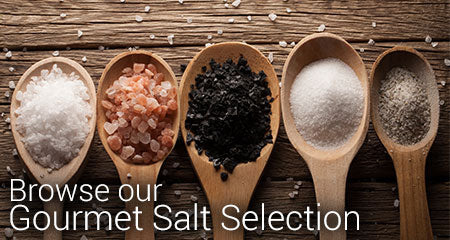
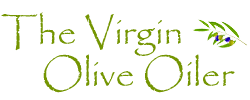
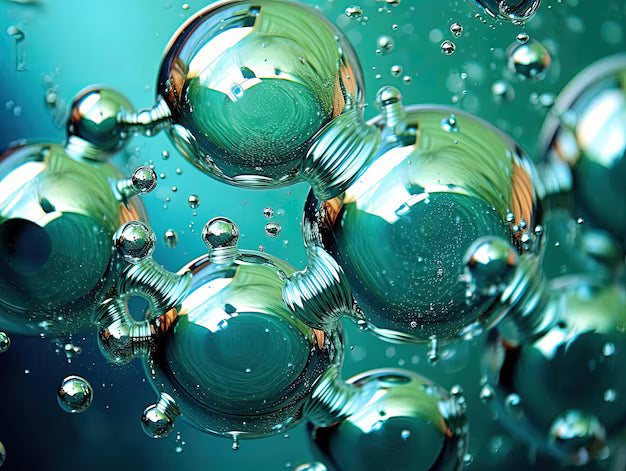

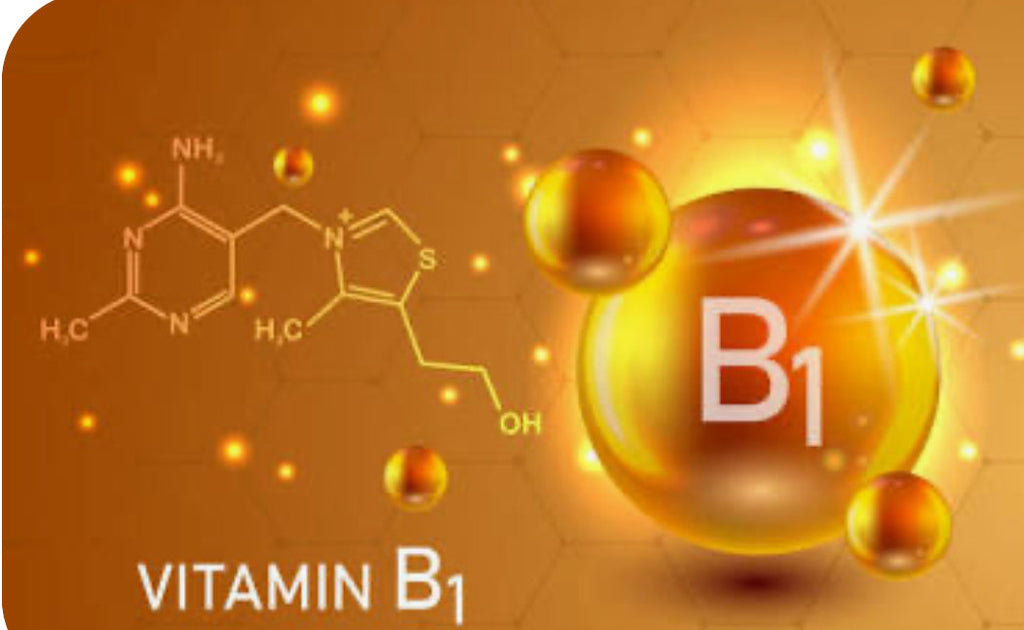
Comments (1)
Absolutely love your blog Julie. Please keep it up we must get the word out!